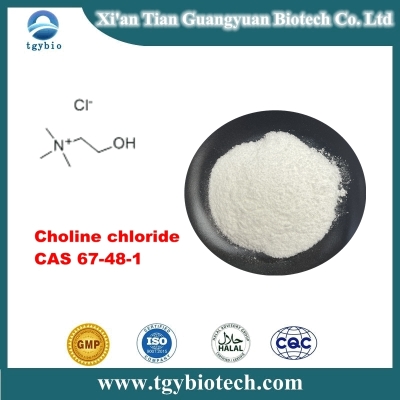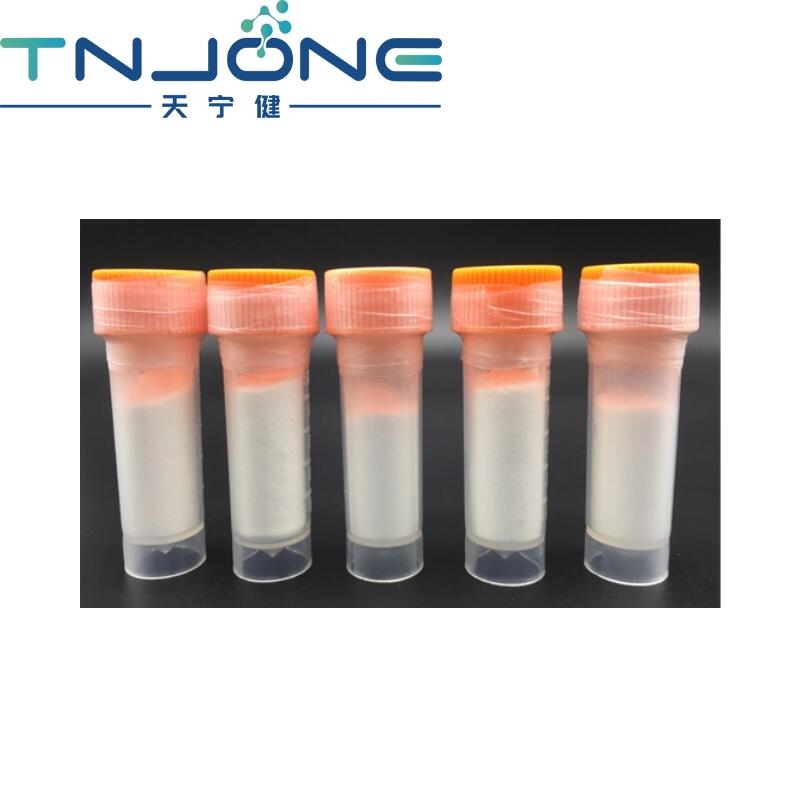Neuron. Qiu Xufeng and others prove that TMIE protein is a necessary component of the mechanical electroduction channel of cochlear hair cells.
-
Last Update: 2020-07-21
-
Source: Internet
-
Author: User
Search more information of high quality chemicals, good prices and reliable suppliers, visit
www.echemi.com
This paper is written by Qiu Xufeng, Met is the process of converting mechanical stimuli into electrochemical signals, which is very important for organisms to perceive touch, hearing and many physiological processes (for related background, see previous reports of bioart: Dr. neuron | Tang Yiquan is specially recommended to analyze how auditory receptors sense mechanical stimuli and also discuss the research history of five sensory receptors (audio, visual, olfactory, taste and touch).the key step of sound perception is that the met channel at the top of hair bundle of cochlear hair cells converts the mechanical vibration generated by sound wave into electrical signal.recent studies have shown that TMC1 and tmc2 are probably channel proteins [1-3] that mediate met in hair cells. However, the molecular mechanism of how TMC protein / met complex induces mechanical stimulation has not been revealed.studies have shown that the deletion of some other proteins (lhfpl5, tmie, cib2, etc.) also seriously damage met [4,5], indicating that they may form met machine together with TMC.interestingly, TMC also mediates a leakage current generation in mouse hair cells and nematodes [6,7], so TMC protein is involved in at least two different ion channels.the above evidence suggests that there are some other subunits and TMC to form met channel complexes for sound perception [8].the Ulrich m ü ller project team of Johns Hopkins University is committed to studying the molecular composition of met machine and the molecular mechanism of hair cells' perception of mechanical vibration, and has identified many proteins that affect the mechanical and electrical transduction of hair cells.among them, pcdh15 and CDH23 constitute tip link. As mechano gating spring, lhfpl5 and tmie are directly involved in mechano electrical transduction, and together with TMC1 / 2, they form met complex (Fig1).on April 27, 2020, the m ü ller research group (together as Christopher L. Cunningham and Dr. Qiu Xufeng) published the title "tmie defines point and gating properties of the mechanotransduction channel of mammalian cochlear hair" in neuron It is further proved that tmie protein is an essential subunit of met channel in cochlear hair cells, and it can regulate the characteristics of met channel.tmie is a secondary transmembrane protein. Previous studies have shown that tmie may be an important component of met complex [5].in this study, the subcellular localization of TMC1 / 2 overexpression in cochlear hair cells of tmie Ko showed that tmie did not directly mediate the transport of TMC protein to stereocilia, nor did TMC1 / 2 mediate the static ciliary localization of tmie protein.electrophysiological records showed that both TMC1 / 2 and tmie were indispensable for met of hair cells.further studies on molecular biology, biochemistry and electrophysiology have shown that the C-terminal region of tmie mediates the interaction with TMC1 / 2, and this interaction directly affects met current. However, the N-terminal and the first transmembrane region do not bind TMC1 / 2, but they also greatly affect the met current and mechanical gating characteristics.a key question is whether tmie, as a subunit, is directly involved in the regulation of met channels? To reveal this problem, the researchers used CRISPR / cas9 technology to create two tmie mutant mice based on the tmie induced deafness mutation.the electrophysiological records of cochlear hair cells of mutant mice showed that tmie mutation significantly impaired met current and changed the selectivity of single channel current and channel for calcium ion, indicating that tmie was directly involved in regulating met channel characteristics.interestingly, these two tmie point mutations do not directly affect the interaction with TMC, suggesting that these two mutations regulate the channel characteristics through other mechanisms.by observing the amino acid sequence of tmie, the researchers found that a large number of positively charged arginine and lysine were enriched in the C-terminal region of tmie. in ion channels (such as mechanically gated Terk channels), arginine and lysine often interact with phospholipids, such as PIP2 [9,10]. in addition, PIP2 has been confirmed to be involved in the regulation of met channel [11] in rat hair cells, so tmie may also interact with phospholipids. by detecting the interaction between tmie peptide and phospholipid, the researchers identified two intracellular segments of tmie C-terminal that significantly bound phospholipid acid, phosphatidylserine, PtdIns (4) P, PIP2 and PtdIns (3,4,5) P3. Mutations in these two segments significantly affected met current. further study found that by using Pao to destroy PIP2 on hair bundle membrane, met current decreased significantly, while tmie induced deafness mutation made met current more sensitive to Pao treatment. in conclusion, as a regulatory subunit of met channel, the N-terminal of tmie is involved in mechanical gating, and the C-terminal binds to phospholipids such as TMC1 / 2 protein and PIP2 and directly affects the characteristics of met channel. (1) pan, B., G é L é OC, G.S., Asai, Y., Horwitz, G.C., kurima, K., Ishikawa, K., Kawashima, Y., Kawashima, Y., Griffith, A.J., and Holt, J.R. (2013), TMC1 and tmc2 are components of the mechanism of transformation channel in hair cells of the mammalian inner ear. Nerve 79, 504 – 515.2.2. 2.2.2.2.2. 79, 504 – 515.2. 2. 2. 2.2.2. 79, 504 – 515.2. 2. 2. 2. 2.2.2.2. 79, 504 – 515.2.2. 2. 2. 2. 2. 2. 2. 2. 2. 2. 2. 2. 2. 2 pan, B., Akyuz, N., Liu, X.P., Asai, Y., Nist-Lund, C., Kurima, K., Derfler, B.H., Gyorgy, B., Limapichat, W., Walujkar, S., et al. (2018). TMC1 Forms the Pore of Mechanosensory Transduction Channels in Vertebrate Inner Ear Hair Cells. Neuron 99, 736–753.e6.3. Jia, Y., Zhao, Y., Kusakizako, T., Wang, Y., Pan, C., Zhang, Y., Nureki, O., Hattori, M., and Yan, Z. (2020). TMC1 and TMC2 Proteins Are Pore-Forming Subunits of Mechanosensitive Ion Channels. Neuron 105, 310–321.e3.4. Xiong, W., Grillet, N., Elledge, H.M., Wagner, T.F., Zhao, B., Johnson, K.R., Kazmierczak, P., and M€uller, U. (2012). TMHS is an integral component of the mechanotransduction machinery of cochlear hair cells. Cell 151, 1283–1295.5. Zhao, B.,Wu, Z., Grillet, N., Yan, L., Xiong, W., Harkins-Perry, S., andM€uller, U. (2014). TMIE is an essential component of the mechanotransduction machinery of cochlear hair cells. Neuron 84, 954–967.6. Liu, S., Wang, S., Zou, L., Li, J., Song, C., Chen, J., Hu, Q., Liu, L., and Xiong, W. (2019). TMC1 confers a leak conductance to modulate excitability of auditory hair cells in mammals. bioRxiv. Yue, X., Zhao, J., Li, X., Fan, Y., Duan, D., Zhang, X., Zou, W., Sheng, Y., Zhang, T., Yang, Q., et al. (2018). TMC Proteins Modulate Egg Laying and Membrane Excitability through a Background Leak Conductance in C. elegans. Neuron 97, 571–585.e5.8. Tang, Y. Q., Lee, S. A., Rahman, M., Vanapalli, S. A., Lu, H., & Schafer, W. R. (2020). Ankyrin Is An Intracellular Tether for TMC Mechanotransduction Channels. Neuron, S0896-6273(20)30233-6. Advance online publication. Chemin, J., Patel, A.J., Duprat, F., Lauritzen, I., Lazdunski, M., and Honore´, E. (2005). A phospholipid sensor controls mechanogating of the K+ channel TREK-1. EMBO J. 24, 44–53.10. Chemin, J., Patel, A.J., Duprat, F., Sachs, F., Lazdunski, M., and Honore, E. (2007). Up- and down-regulation of the mechano-gated K(2P) channel TREK-1 by PIP (2) and other membrane phospholipids. Pflugers Arch. 455, 97–103.11. Effertz, T., Becker, L., Peng, A.W., and Ricci, A.J. (2017). Phosphoinositol-4, 5-Bisphosphate Regulates Auditory Hair-Cell Mechanotransduction-Channel Pore Properties and Fast Adaptation. J. Neurosci. 37, 11632–11646.
This article is an English version of an article which is originally in the Chinese language on echemi.com and is provided for information purposes only.
This website makes no representation or warranty of any kind, either expressed or implied, as to the accuracy, completeness ownership or reliability of
the article or any translations thereof. If you have any concerns or complaints relating to the article, please send an email, providing a detailed
description of the concern or complaint, to
service@echemi.com. A staff member will contact you within 5 working days. Once verified, infringing content
will be removed immediately.







